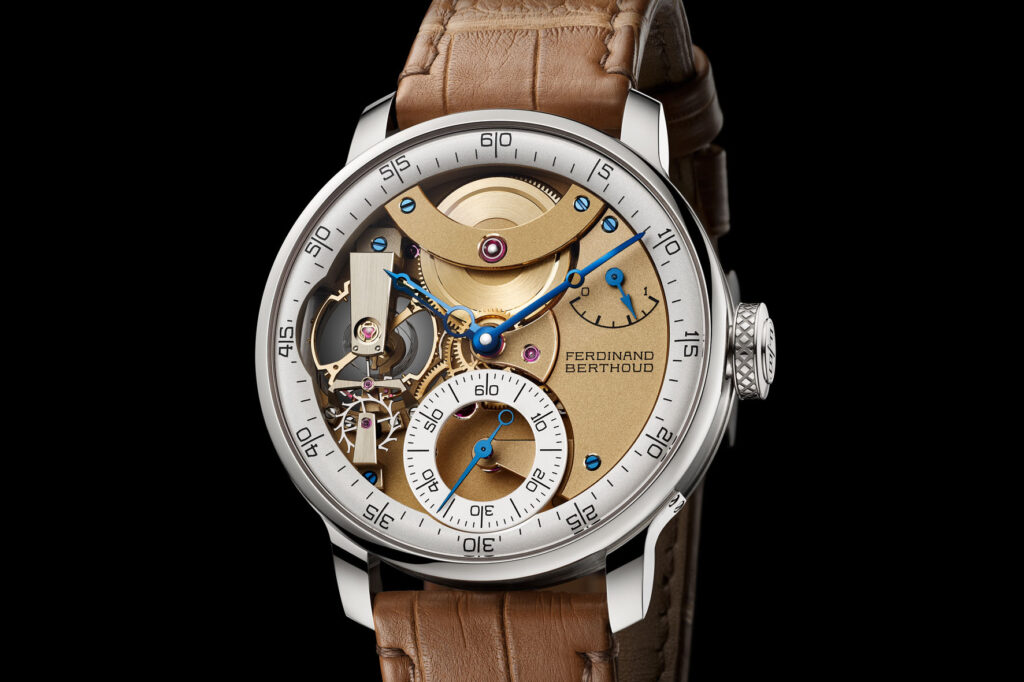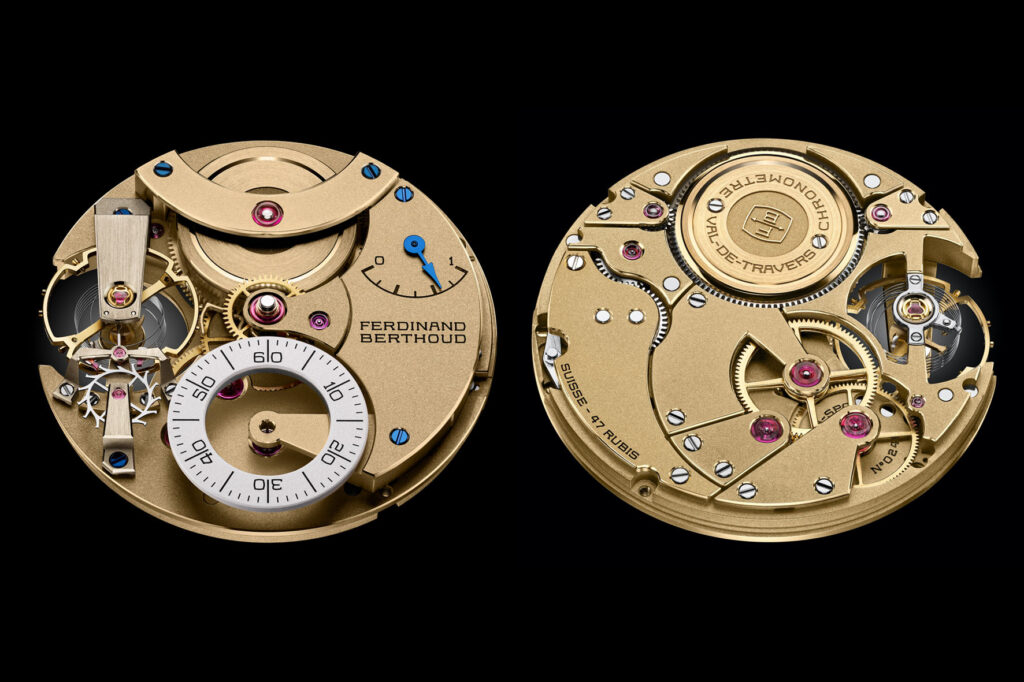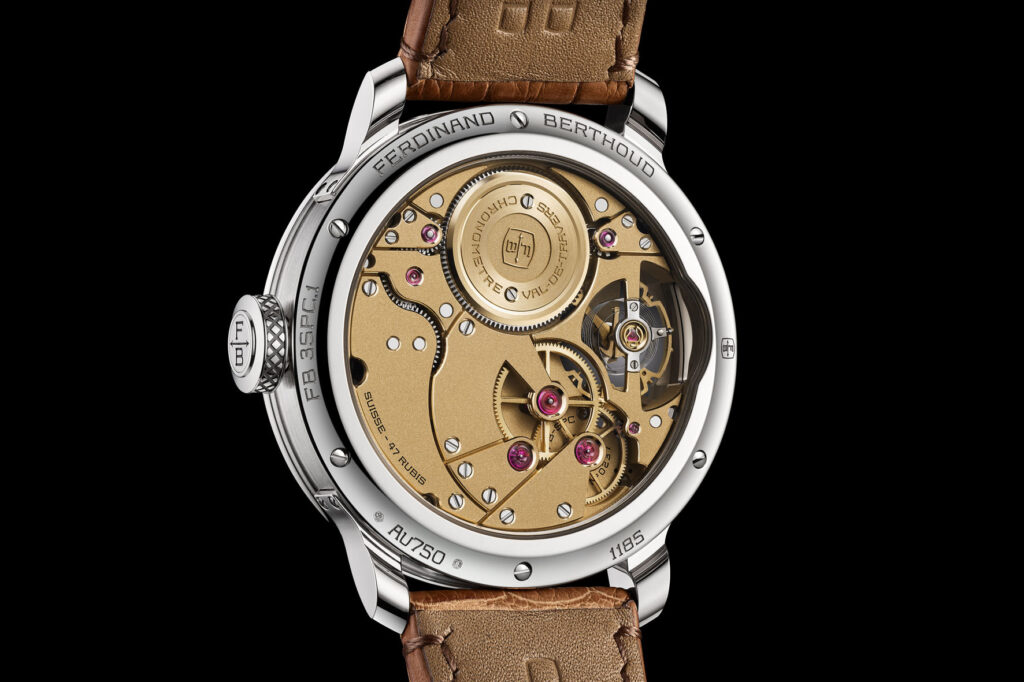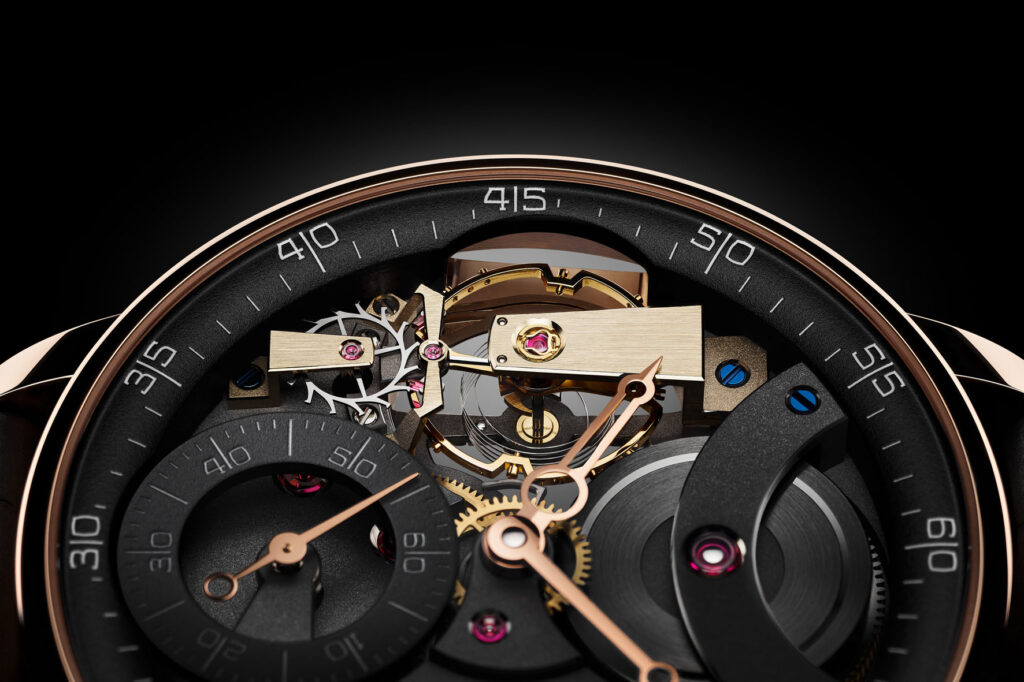Ferdinand Berthoud: Chronomètre FB3 SPC
19 October 2022Ferdinand Berthoud presents Chronomètre FB3 SPC, the new watch that brings the brand’s third collection to life. Like all of the Brand’s creations, this new model is based on the quest for reliability and chronometric precision.

With the new Chronomètre FB3 SPC, Ferdinand Berthoud explores a chronometric mode that was the subject of the most abundant and fruitful research during the 18th century golden age of watchmaking: the balance spring. However, these experiments were poorly documented and the Maison was faced with creating the new FB-SPC caliber without any kind of documentation.

This new mechanical movement is based on a cylindrical balance-spring, a rare watchmaking speciality on which Ferdinand Berthoud himself worked. His nephew, Louis Berthoud, favoured its use in his famous No. 26 decimal watch. Calibre FB-SPC is the only one of its kind to satisfy the chronometric (precision timekeeping) criteria of the COSC: ISO 3159 certification made possible only by the precision adjustments performed by the Manufacture’s watchmakers. In addition to the development of a new variable-inertia balance-spring, equipped with four fine adjustment screws and 12 load screws, many months of research, testing and fine-tuning were necessary to define the number of coils and the geometry of the terminal curve at the attachment points in order to optimise rate precision.

This new mechanical hand-wound movement stems from more than three years of research and development, during which every detail was carefully examined. Appearing at 9 o’clock, the three main escapement organs – the balance-wheel, pallet-lever and escape-wheel – are thus individualised, distinct and prominent. This ample space dedicated to the regulating organ enables its operation to be admired in full, and the cylindrical balance-spring to be seen beating throughout the three-day power reserve, including through a large water-resistant porthole created in the case middle at 9 o’clock.
A DESIGN INSPIRED BY POCKET WATCHES
While the FB 1 and FB 2 collections belong to the legacy of Ferdinand Berthoud’s marine chronometers, the FB3 collection borrows from the style of the Master’s nephew, student and successor: Pierre-Louis Berthoud (1754-1813). Born in 1754 in Couvet, in the Val-de-Travers, the latter moved to Paris at his uncle’s request. In 1784, having skilfully assisted in the making and improving of his distinguished relative’s marine chronometers, he was entrusted by Ferdinand Berthoud with the responsibility of his workshop, located since 1754 on Rue de Harlay, running along the Place Dauphine in Paris.

Under his impetus, private watchmaking experienced considerable expansion. Louis Berthoud added his personal touch, which can be seen in the aesthetics of the mechanism. He inaugurated a style that was rooted in the highly functional appearance of marine chronometers, where function dictated form. He developed these pragmatic designs at a time when the spirit of the age was shifting from the baroque and opulent style of the monarchy to neo-classicism during the early days of the Republic and subsequently the Empire. Thanks to his exceptional talent, Louis Berthoud made the workshop’s activity bear fruit by naturally accompanying the societal and stylistic changes of his time.

This inspiration is evident at first glance in the FB3 collection. Its new round case, available in 18-carat white or rose gold, recalls the curves of pocket watches from the early 19th century, such as the decimal watch No. 26, made in 1793 by Louis Berthoud and now on display within the Chronométrie Ferdinand Berthoud heritage collection in Fleurier.
A single line hugs the curves of the domed crystal and the slender polished bezel of the FB 3 models, while harmoniously extending along the strap and the lugs screwed to the case. This refined and coherent ensemble echoes the slimness of the case (42 mm in diameter and 9.43 mm thick), which fades into the background so as to make way for the movement.
THE ARCHITECTURE OF THE FB3 SPC
The other deep-seated characteristic of Ferdinand Berthoud lies in the desire to create movements with a legible, graphic and three-dimensional architecture. The mainplate is placed at the heart of Calibre FB-SPC and the components are assembled on either side of it.
On the dial side, a close-knit array of six bridges traces curves and lines directly inspired by the work of Louis Berthoud. They are echoed on the back by ten other bridges forming an intimately juxtaposed mosaic.

The indication of time is pared down to the absolute minimum: a peripheral inner bezel ring for the hours and minutes, and small seconds at 6 o’clock. At 2 o’clock, the power-reserve indicator is engraved in a sector graduated in 12-hour segments from “0” to “1”. The rest of the dial, deliberately left open, enables one to admire the aesthetics of the movement’s components, their arrangement, as well as the surface conditions alternating between chamfered and polished bevels and matt surfaces created by fine sandblasting. The architecture of the movement is minimalist in appearance, yet no less complex. The hours and minutes flange, shaped like an amphitheatre, extends vertically to the mainplate. The openworked and suspended seconds disc is secured from below to a dedicated bridge. The balance-bridge, with its distinctive screw-in heel shape, is a historical reference to Ferdinand Berthoud’s No. 3 astronomical watch. Positioned at 12 o’clock, the barrel bridge spanning a wide 120° angle recalls a bridge on the No. 2575 quarter-repeater watch made by Louis Berthoud.

The Chronomètre FB3 SPC is available in two versions. The first features an 18-carat white gold case, 2N pale yellow gold movement components and an eggshell-coloured dial in sandblasted silver-toned brass.
The second is equipped with an 18-carat 5N rose gold case framing a black-varnished minutes track with black-rhodium treated visible movement components. Their facetted, skeletonised and open-tipped 18-carat gold hands are inspired by a 1785 Ferdinand Berthoud astronomical regulator belonging to the Chronométrie Ferdinand Berthoud heritage collection in Fleurier.
Production of the Chronomètre FB3 SPC is naturally limited by the capacities of the Chronométrie Ferdinand Berthoud workshop in Fleurier to a maximum 25 of these timepieces per year. (Price CHF 140,000)
